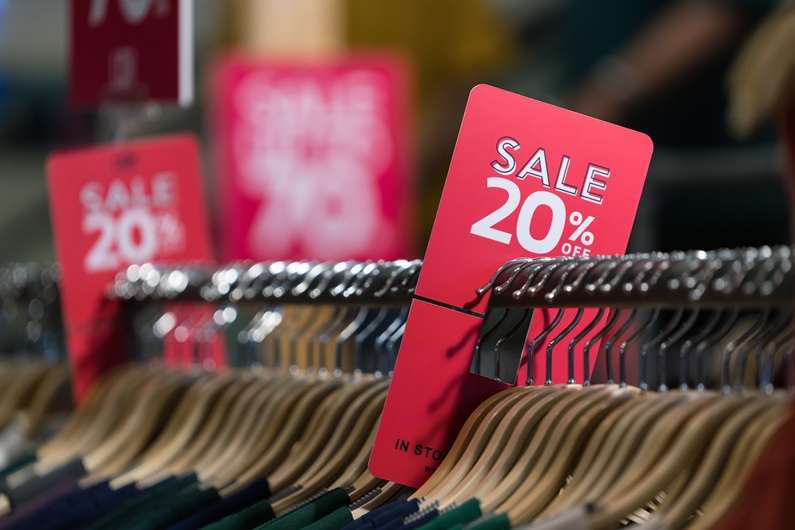
Accessories are often the small details that create a big impact. A simple belt, a pair of sunglasses, or a statement watch can elevate an outfit and express individuality. However, these small additions can sometimes come with large price tags. The good news is that smart shopping habits, verified discount sources, and careful timing can help you enjoy top-quality accessories without overspending.
Whether you prefer minimalist jewelry, branded handbags, or travel-friendly gear, this complete guide walks you through everything you need to know about saving money while keeping your accessory game strong and stylish.
1. Why Accessories Matter More Than Ever
Accessories have shifted from being fashion extras to everyday essentials. They now blend functionality with personality. Think of a sturdy backpack that protects your laptop, a pair of noise-canceling earbuds for your commute, or a watch that doubles as a fitness tracker.
Because of their growing usefulness, accessory spending has increased in recent years. But with the right knowledge, you can still enjoy premium products while keeping your budget intact.
Smart accessory shopping is all about balance. You do not need to choose between affordability and quality. With the right research and planning, you can have both.
2. Identify What You Truly Need
Before exploring discounts or sales, take a step back and decide which accessories you actually use frequently. It’s easy to get caught up in online browsing and end up buying items that stay untouched.
Here’s a simple approach:
-
Make a list: Write down accessories you use daily, weekly, and rarely.
-
Replace strategically: Only upgrade when something is worn out or no longer serves its purpose.
-
Prioritize versatility: A neutral handbag, classic watch, or solid belt can pair with multiple outfits.
This clarity ensures your spending focuses on value, not impulse.
3. Learn the Retail Cycle
Most brands follow a predictable pricing pattern. Understanding when and why prices drop allows you to plan purchases around sale periods instead of reacting to random ads.
For accessories, typical discount cycles include:
-
Post-holiday clearance: January and February are prime months to find end-of-season markdowns.
-
Spring and fall transitions: Retailers introduce new collections, which makes last season’s designs more affordable.
-
Black Friday and Cyber Week: Nearly all major brands reduce prices for a limited time during these events.
-
Mid-year sales: Some fashion and tech brands host special mid-season offers that are worth watching.
By timing your purchases, you can consistently save between 25 and 60 percent without relying on short-lived promotions.
4. Use Trusted Platforms for Public Discounts
While searching for accessory deals online, you’ll find thousands of coupon pages but not all of them are trustworthy. Some share outdated codes or collect unnecessary information before showing offers.
To stay safe:
-
Rely on verified public discount directories like Coupon Finders that list real, accessible brand offers without hidden conditions.
-
Check directly with the brand’s official site to confirm whether a deal is still active.
-
Avoid any site that asks for credit card information just to view or unlock a coupon.
Genuine coupon sources are transparent, updated regularly, and focus on helping you make informed shopping choices.
5. Combine Offers for Maximum Value
One of the most effective strategies for saving money on accessories is combining different types of savings. This method works best when done thoughtfully and legally.
Here’s how you can layer discounts:
-
Use a coupon code on top of a storewide sale. For instance, if a retailer offers 30% off during a clearance event, applying a 10% coupon code might bring your total savings to 40%.
-
Join cashback programs. Many online platforms return a small percentage of your total purchase amount. Over time, this becomes significant, especially for frequent buyers.
-
Redeem loyalty rewards. Even small point balances can reduce your final checkout price.
Be sure to read each offer’s terms, as some discounts cannot be combined. A little patience can multiply your savings without any risk.
6. Choose Quality That Lasts
While it’s tempting to chase the lowest price, cheap accessories often cost more over time when they wear out quickly. A quality wallet or belt can last years longer than a cheaper alternative.
Before making any purchase, evaluate:
-
Material: Genuine leather, stainless steel, or solid metals are more durable than synthetic blends.
-
Craftsmanship: Review stitching, closures, and detailing when available in product photos or descriptions.
-
Warranty: Many reputable brands offer limited warranties or replacement programs.
This mindset shifts you from spending less temporarily to saving more permanently.
7. Understand Category-Based Discounts
Different types of accessories go on sale for different reasons. Knowing when and where to look helps you narrow your search efficiently.
Fashion Accessories (Handbags, Jewelry, Sunglasses):
These follow seasonal color trends. Outgoing shades or prints are discounted before the next style cycle begins.
Tech Accessories (Headphones, Chargers, Cases):
Discounts often appear when a new version of the main gadget is released. For example, when a new smartphone model launches, older accessories drop in price.
Travel Accessories (Luggage, Organizers, Backpacks):
Off-season timing is key. Prices fall after summer and major holidays when fewer people travel.
Understanding these product rhythms gives you better control over your purchase decisions.
8. Read Reviews and Compare Before Buying
Online reviews can offer valuable insight into the true quality and performance of accessories. However, not every review is reliable.
To interpret them correctly:
-
Look for verified buyer badges instead of anonymous ratings.
-
Read both positive and negative reviews for balanced insight.
-
Watch out for identical phrasing across multiple reviews, which can indicate inauthentic feedback.
Comparing products across a few retailers is also smart. Some stores price match competitors or offer additional discounts for first-time customers.
9. Protect Yourself From Impulsive Shopping
Accessories are often designed to attract quick decisions. Colorful banners, timers, or phrases like “Last chance” can create urgency. While such offers can be real, they often lead to unnecessary spending.
To stay focused:
-
Wait 24 hours before buying non-essential items.
-
Set a monthly budget for discretionary shopping.
-
Track your purchases to see how often you actually use what you buy.
Financial mindfulness is the foundation of responsible shopping.
10. Explore Sustainable and Ethical Choices
More brands now promote sustainability by offering eco-friendly materials and ethical manufacturing. These accessories may initially cost a little more but often last longer and carry social value.
Look for:
-
Recycled or organic materials.
-
Brands with transparent supply chains.
-
Repair and reuse programs.
Sustainable shopping is not only better for the planet but also aligns with long-term savings by prioritizing durability.
11. In-Store vs. Online: Finding the Better Deal
Online shopping gives you the convenience of comparing prices instantly, but physical stores have advantages too. Local outlets sometimes offer in-person-only promotions that are not visible online.
For example:
-
A mall store may provide extra discounts on final sale items.
-
Factory outlets often sell last season’s products at 40–70% off retail prices.
-
Some stores price-match online competitors if you show proof at checkout.
When possible, compare both environments before deciding where to buy.
12. Use Price Tracking Tools
Technology can work in your favor. Several price tracking apps monitor your favorite items and notify you when they drop in price. This prevents the need for constant manual checking.
Some tools even display a product’s price history, helping you identify whether a “limited offer” is truly a deal or just regular pricing.
By relying on these digital helpers, you can plan purchases based on real data instead of marketing claims.
13. Plan for Gift Seasons
Accessories make excellent gifts, but prices can rise sharply before holidays. To avoid paying premiums during peak demand:
-
Start shopping one or two months before major events like Valentine’s Day, Mother’s Day, or Christmas.
-
Buy generic gift items such as wallets or scarves in advance and save them for later.
-
Use brand newsletters to monitor upcoming sales rather than last-minute shopping.
Early planning gives you flexibility and reduces pressure spending.
14. Avoid Overexposure to Ads
After visiting one online store, you might notice the same accessory following you across other websites. This happens due to digital advertising systems that track browsing behavior.
While not harmful, it can influence impulsive buying. The solution is to clear browser cookies periodically or browse in private mode when comparing prices.
Being aware of these marketing tactics helps you stay in control of your purchasing choices.
15. Final Thoughts
Accessories are powerful details that define your style and enhance everyday comfort. Yet, they don’t have to come at a high cost. By combining informed shopping practices, verified public discounts, and patience, you can create a wardrobe or collection filled with durable, stylish, and affordable pieces.
Smart shoppers approach every purchase with curiosity and caution. They verify coupon legitimacy, time their shopping around major sale events, and pay attention to quality as much as price.
Coupon Finders exists to simplify that process. It’s not about chasing every offer it’s about shopping smarter, knowing when and where the best public discounts are available, and using them responsibly.
Accessories reflect your lifestyle. Let them also reflect your financial confidence. When you shop with knowledge, every accessory you own carries both personal value and practical savings.








